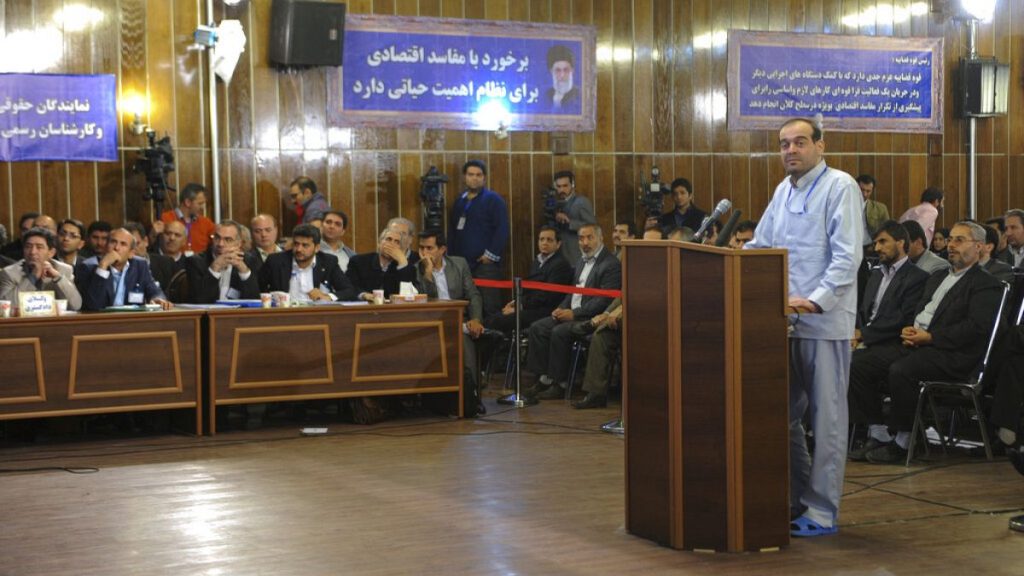On Saturday, a dramatic incident unfolded within the Palace of Justice in Tehran, Iran, the headquarters of the country’s judiciary. Two prominent hard-line judges, Mohammad Mogheiseh and Ali Razini, were fatally shot by a lone gunman, who subsequently took his own life. The attack, a rare occurrence targeting such high-ranking judicial officials, sent shockwaves through the nation and sparked immediate investigations. A bodyguard assigned to one of the judges was also wounded in the attack. While initial reports suggested the assailant had no apparent connection to the judges or pending legal cases, authorities labeled him an “infiltrator,” hinting at potential insider involvement and raising concerns about security breaches within the heavily guarded complex. The incident occurred amidst a backdrop of economic instability in Iran, escalating regional tensions, and the return of Donald Trump to the US presidency, adding further complexity to an already tense political climate.
Both judges, Mogheiseh and Razini, were clerics serving on Iran’s Supreme Court, a body with numerous branches across the country, representing the highest level of legal authority. They held significant influence within the judicial system and had been involved in numerous controversial cases. Mogheiseh, notably, had been sanctioned by the U.S. Treasury in 2019 for overseeing what were deemed unfair trials, often involving journalists and internet users. He was also accused of prosecuting members of the Baha’i minority for practicing their faith. Razini had previously survived an assassination attempt in 1999 when an explosive device was thrown at his vehicle. This previous targeting, along with both judges’ alleged involvement in the 1988 mass execution of political prisoners, fueled speculation about the motives behind the attack.
The 1988 executions remain a highly sensitive and controversial chapter in Iran’s history. Following the Iran-Iraq War and a UN-brokered ceasefire, Iran’s then-Supreme Leader Ruhollah Khomeini ordered the execution of thousands of political prisoners, primarily members of the Mujahedeen-e-Khalq (MEK), an exiled opposition group. The executions, shrouded in secrecy and often carried out after summary trials, are widely condemned by human rights organizations. Estimates of the death toll range from 5,000 to 30,000 individuals. While Iran has never officially acknowledged the full extent of the executions, the events continue to haunt the nation and fuel the grievances of those who lost loved ones. Activists and exiles have consistently implicated both Mogheiseh and Razini in these executions, accusing them of participating in the “death commissions” responsible for the extrajudicial killings.
While Mogheiseh remained largely silent on the accusations regarding his role in the 1988 executions, Razini had publicly defended the proceedings, describing them as fair and lawful in a 2017 interview. He argued that the actions taken were necessary to maintain national security and prevent the MEK from gaining power within the country. This stance, however, did little to appease critics and likely contributed to his being perceived as a target by those seeking justice for the victims of the executions. The lack of accountability for those involved in the 1988 events continues to fuel resentment and calls for justice, adding to the complex political landscape within Iran.
The attack on the judges comes at a time of heightened tensions and economic challenges for Iran. The country faces renewed pressure from international sanctions, while its regional allies are increasingly vulnerable to Israeli actions. The political climate within Iran is also volatile, with ongoing debates regarding social freedoms and political reform. The attack on the judges, while shocking, reflects the underlying tensions and unresolved historical grievances that continue to simmer beneath the surface of Iranian society.
The assassination of the judges, while a targeted act of violence, also raises broader questions about security, accountability, and the legacy of the 1988 executions. The incident highlights the deep divisions within Iranian society and the ongoing struggle for justice and reconciliation. The government’s response to the attack, including the ongoing investigation and potential security ramifications, will be closely watched, as it could significantly impact the political landscape and further fuel existing tensions. The attack serves as a stark reminder of the unresolved issues surrounding the 1988 executions, the ongoing calls for accountability, and the complex challenges facing Iran as it navigates a turbulent political and economic landscape.














